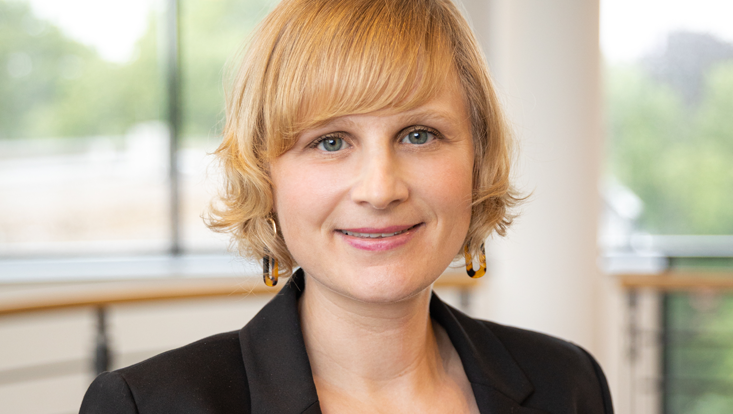New Advisor for Research Collaboration"Cooperation benefits all partners"
12 October 2020, by Christina Krätzig

Photo: UHH/Ohme
One reason Universität Hamburg, northern Germany’s largest research institution, was named a University of Excellence was in recognition of its role as a “flagship university.” True to this concept, the University would like to further develop and fortify cooperation among various universities and non-university research institutions in the greater Hamburg region. Dr. Elisabeth Hettig explains the next steps. Her position was created precisely for this purpose.
Ms. Hettig, how does cooperation among research institutions in the greater Hamburg region also benefit Universität Hamburg?
Cooperation strengthens Hamburg generally and that benefits all partners. It is also good for us if the world sees Hamburg as a place where science and scholarship are conducted at a high level and are highly valued.
Furthermore, Universität Hamburg, as a wide-ranging comprehensive institution, profits from cooperation with other partners—the University’s 4 clusters of excellence, which are based on such cooperation, exemplify this. For example, the detailed simulations of future climate and environmental conditions that the Climate, Climatic Change, and Society cluster are working on would not have been possible without the calculation capabilities of the German Climate Computing Center. And the search for matter with new properties at The Hamburg Centre for Ultrafast Imaging: Cluster of Excellence Advanced Imaging of Matter would have been inconceivable without the use of the world’s largest x-ray laser at the European XFEL.
Is cooperation in a major city easier to cultivate than elsewhere?
Definitely. There are short communication pathways between institutions as well as to the government bodies involved in science and research. In city-states, you can engage more often and perhaps more intensively. The proximity also enables people to share research infrastructure without red tape, as they have been doing, for example, for a long time in Bahrenfeld. And measures such as joint appointments or support for early career researchers in cooperative graduate schools can be implemented more easily.
How will cooperation be built upon specifically?
Our most important project and instrument is the Partnership for Innovation, Education and Research, or PIER Hamburg for short. PIER Hamburg builds upon a long-standing tradition of successful cooperation and began with cooperation between Universität Hamburg and DESY. Today, it forms an alliance of 12 partners, including, for example, Hamburg University of Technology (TUHH), Bernhard Nocht Institute for Tropical Medicine, Hans-Bredow-Institut for Media Research, and several Fraunhofer institutes and Max Planck institutions. With PIER Hamburg, we are now for the first time establishing cooperation to provide a framework for multifaceted exchange and collaboration among higher education institutions and non-university research institutions. There has been no such framework as yet. Such an ambitious alliance not only facilitates more intensive links between research activities; PIER Hamburg also allows partners to work on common topics such as support for early career researchers, digitalization, or knowledge transfer, which transcend the boundaries of individual research areas or institutions.
What are the conditions?
PIER Hamburg’s steering committee meets twice a year to discuss current strategic issues and basic concerns. Furthermore, as part of the Excellence Strategy of the Federal and State Governments at Universität Hamburg, annual funding is available to support partners’ cooperation projects. My own position was also created to cultivate PIER Hamburg. Currently, we are focusing on, among other things, developing research cooperation and funding and support activities.


